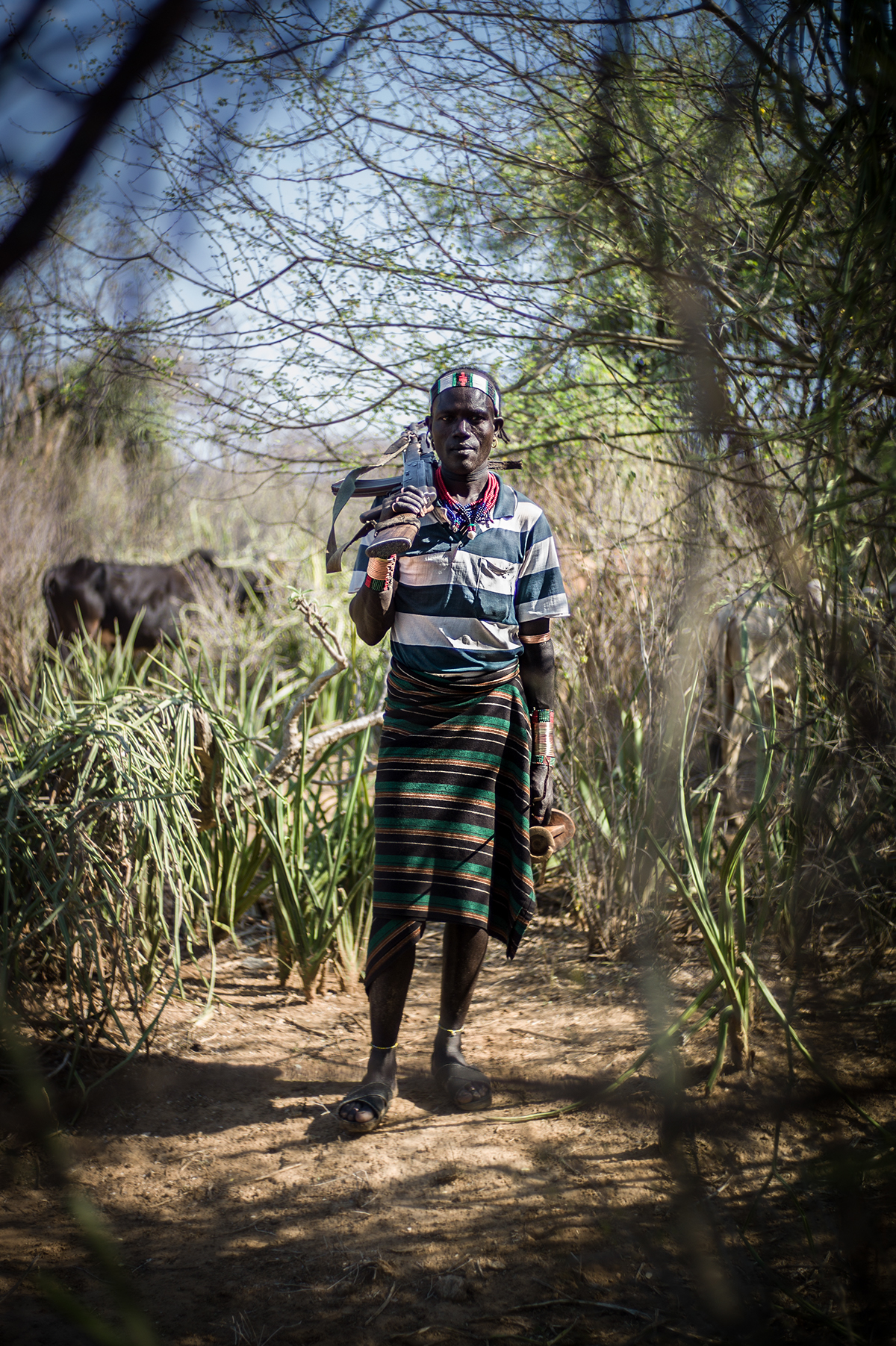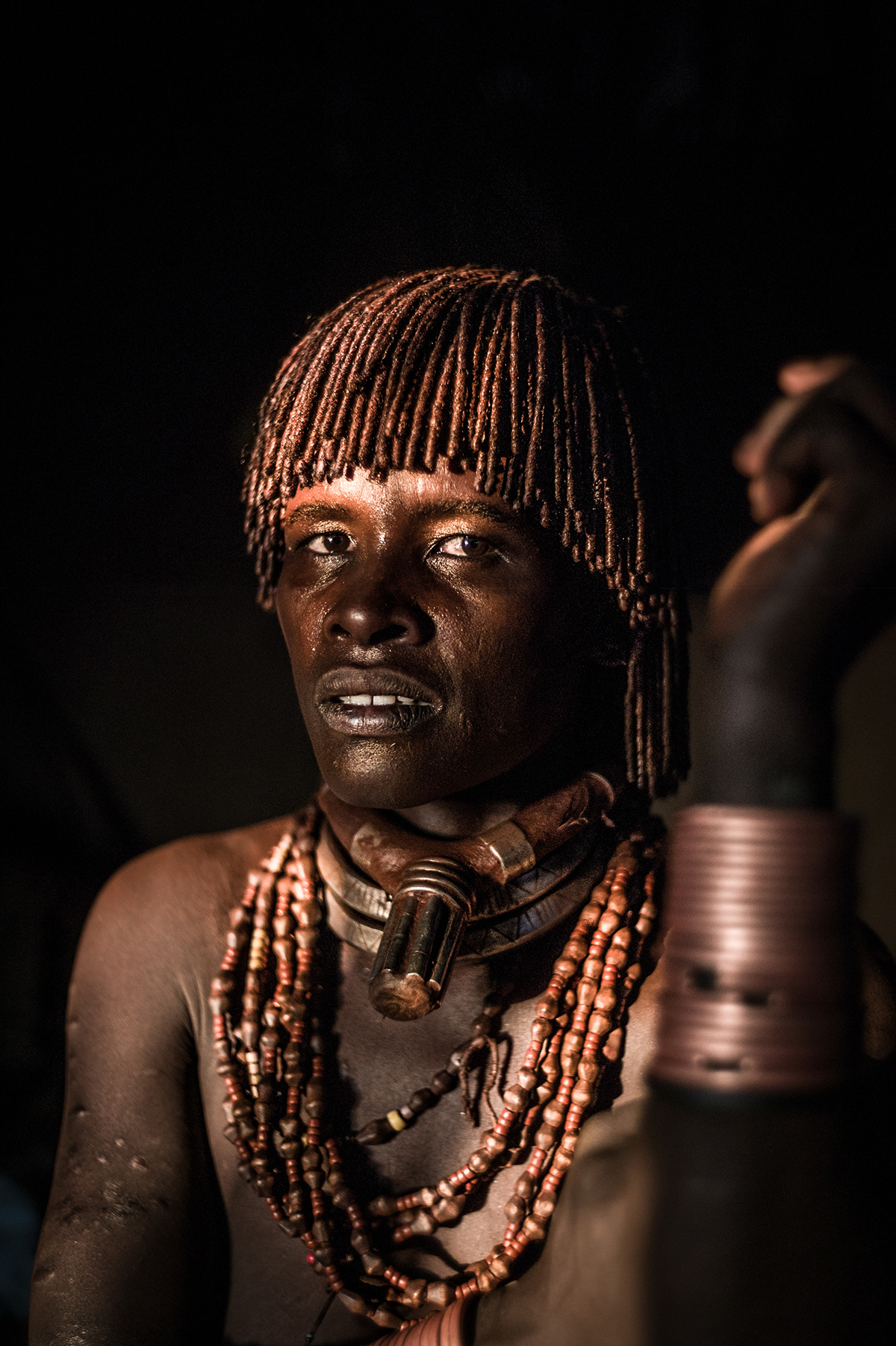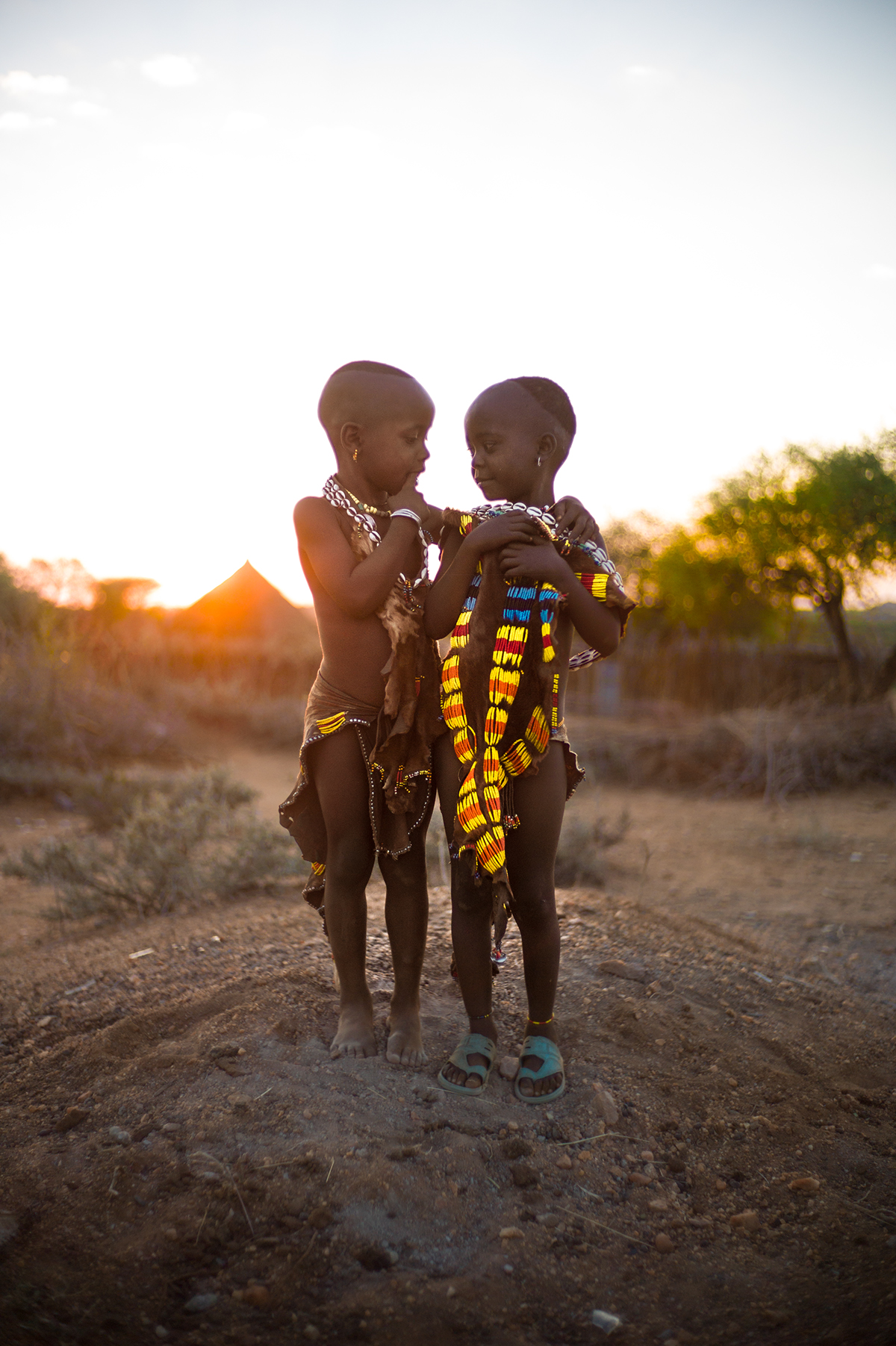
A woman from the Hamar tribe in Turmi, Ethiopia. The colour of the earth at dusk - when the light softens and colours grow – combined with the hues of ochre and resin on the black Hamar skin, all collude to make this portrait appear somewhat surreal. Welcome to the south.

Water; around here, if you can get it… embrace it. A boy gulps from a makeshift cup in the parched Keske River in the Omo Valley, Ethiopia. All that remains of the river is a few puddles, which locals use to rehydrate and bathe in. The dry heat, arid landscape and scarcity of water mean that even the slightest trace of H2O is met with a mixture of relief and glee.

A Hamar man walks his bulls to the Jumping of the Bulls ceremony. The ritual is a coming of age ceremony for Hamar boys, requiring them to leap over a line of cattle in order to become a man. Successful completion of the task (4 times) qualifies him to marry the wife chosen for him by his parents, as well as own cattle and have children. Failure means he is not yet ready and must wait another year to prove his mettle.

A Hamar woman prepares food in her hut in a village near Turmi, Ethiopia. She wears two heavy necklaces around her neck to show she is married. The third necklace around the top part of her neck is a “Burkule”. Made of leather and metal with a large cylindrical detail on the front, Burkules show she is her husband’s “first wife”. The Hamar tribe practices polygamy and men can take as many wives as they can afford; the dowry is usually 30 goats and 20 cattle owing to the bride's family. The first wife has the highest status among the wives.

A Hamar woman at the weekly market at Turmi, where locals purchase items such as gourds for carrying milk; goats; goatskin and jewelry. Her clothes are made of goatskin decorated with Cowry shells, a sea snail that symbolises womanhood, fertility, birth and wealth. The bracelets and cowry shells are also used as instruments to jingle during ceremonies and rituals. One of the reasons Hamar women are so photogenic is the glistening ochre and mud make-up they apply to their face, hair and body, creating wonderful shade of burnt orange and copper. A mixture of red ochre and cow fat is rubbed into their hair, which is carefully braided from the crown to the ends creating crimson-colored dreadlocks called goscha. Red ochre has a strong religious significance, linked to notions such as blood, vitality, fertility and power.

A Hamar woman in a village near Turmi. Brass and copper coils are wound tightly around her arms while the thick welts that can be seen on her right arm also appear on her back and throughout her body. These scars are a source of pride in the Hamar tribe and are considered beautiful. Prior to the Jumping of the Bulls ceremony, women are whipped by young men until their backs are bloody, a ritual that expresses their devotion towards the males and coincides with their brothers' coming of age ceremony. The greater the scar the deeper the loyalty to the man. While the whipping is theoretically ‘consensual’ (women often jostle each other and demand it), should they refuse to be whipped they will be shamed and never be able to marry.

A Hamar woman inside her mud and stick hut in a village close to Turmi. Jewelry and ornaments are worn to show social and marital status among Hamar women. The two metal necklaces around her neck show she is married. However, the absence of a third necklace reveals she does not hold the highly sought status of a “first wife”. The Hamar tribe practices polygamy, and while a man is entitled to as many wives as he can afford (paid in goats, cattle and guns), women can only marry one man. Life for the second and third wives is challenging and can often lead to exploitation. This woman has survived her husband and now heads the household, a trend that is common in the Hamar tribe due to age disparity between husbands and wives.

A Hamar boy is captured in a moment of contemplation as he gazes out through the door of his mud and stick hut in the Omo Valley, Ethiopia. The small doorway to the hut created beautiful natural lighting and a warm pallete of colours. The shape of the door meant the light focussed mainly on the boy’s face while naturally fading out on his body.

A Hamar woman prepares food inside her mud hut. Hamar women are responsible for all domestic duties including fetching water, cooking, cleaning the home and looking after the children.

A child’s gender has huge implications for a Hamar family. A daughter symbolises future wealth for a family, as a dowry in the form of cattle, goats, honey or guns will be paid by her future husband’s family.

Brotherly love. Two Hamer kids share a moment of affection in their village near Turmi. They are sporting the traditional Hamar haircut: a shaved forehead and neck leaving a bun up top.


